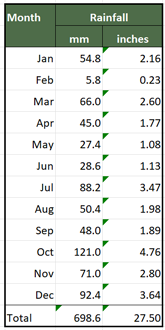- To stop marauding pigeons from devastating our plants
- To give some protection against cabbage white butterflies
It is a bit of a pain covering all our brassicas with netting. It means getting them planted is a longer job when the netting needs to be erected after planting. The netting has to be lifted above the plants or the pigeons cunningly sit on the netting pecking through it to eat our tasty vegetables.
These autumn cabbages and winter sprouts were planted out at the beginning of June and netting erected to give them protection from pesky pigeons waiting for their next meal. It does have a few drawbacks as the plants can get a bit neglected and the weeds left a little too long because of the hassle of removing the net to hoe or remove the weeds. The plants don’t get properly inspected for other damage or pests mainly whitefly which might not be spotted until the plants are infested and clouds of inspects take off from the plants when the leaves are disturbed. So far the netting has been taken off once to weed around the plants and spray them with a soft soap solution to control the white fly which was starting to infest them. They were then treated to a foliar feed of seaweed fertiliser before replacing the netting.
It’s not foolproof as this cabbage (Primo ) shows. Despite been covered with netting there is some caterpillar damage and it probably took a little longer to notice and remedy than if the plant wasn't under netting. These early cabbages were protected with some wire netting against pigeons but not against butterflies so it possible that this is when the butterfly managed to land and lay eggs. On the other hand left unprotected against the cabbage white butterfly who knows perhaps the damage might have been worse by the time it was spotted.
We decided to have a trial with some brassicas planted out in a sort of potager bed with a variety of other plants to try to confuse both pigeons and cabbage white butterflies. It’s not the sort of bed that looks its best with netting dotted all over it and the plants look better planted in ones and twos around the bed instead of regimented rows.
So the experiment began and a few brassica plants were added to the bed which already contained our speciality pea variety Carouby de Maussane. Of course at first we couldn't bring ourselves to do it. We had some netting available and we used this to give the young brassica plants some initial pigeon protection.
Eventually as we added more plants the netting was removed and the crops left to the ravages of the pigeons. I suppose the hope was that the cabbages and cauliflowers would be left alone and we would be able to conclude that protecting crops from pigeons with netting is a complete waste of time.
However this has turned out not to be the case. It seemed for a short while that the plants were left alone. We had an idea that the pigeons didn’t go for red so our red cabbage Huzaro would be a survivor, sadly wrong. The plants were treated in a similar way to those under netting. The weeds were kept hoed and the plants watered to give them some sort of chance in the extremely dry weather. Things did look promising for a while with no damage to the plants but it didn’t last.
This is what’s left of our Huzaro red cabbage. Our idea that pigeons didn’t like red leaved brassicas was proved wrong. As you can see the main leaves have been eaten back to the stems and it looks like a few more attacks and the plant will be completely destroyed. I wonder if pigeons like the white fly although there’s not much leaf left for white flies to infest.
This autumn cabbage Kilaton, which to be honest might be a Primo summer cabbage as it’s trying to heart up already is struggling due to the outer leaves been shredded. It will be interesting to see whether the birds or plant win out in the end.
This cabbage which has darker green leaves and is probably an autumn variety Kilaton has plenty of damage too so I don’t think colour has much to do with choice of menu for pigeons.
This cauliflower (Kaleidoscope) has not even had a chance to get going. A combination of the extremely dry weather and pigeon damage have left the plant in a sorry state. The plants weren't the best of plants when they were transplanted but that didn’t bother the pigeons.
We also planted some beetroot varieties in this bed and they too have been left undamaged.
Both our green and red kale have been left alone by the pigeons and show no signs of damage at all and the plants are growing away quite well.
We also planted some beetroot varieties in this bed and they too have been left undamaged.
That’s our experiment so far. We’ve already concluded that it’s certainly worth protecting our young cabbage plants from pigeons to allow them to grow on unchecked by not having their leaves shredded. We are planning to leave the plants in situ to the end of the season to see if they manage to produce any worthwhile crops. The cauliflowers might be the exception here as I’m sure if they survive only tiny malformed curds will be produced.
I’d better look after our cabbages under butterfly netting a little bit better because it doesn't look like cabbages that look half decent can be grown on our plot without some form of protection.
These cabbages and cauliflowers have been grown under mesh since been transplanted. At the moment they seem to be doing well despite the dry conditions





































They've such a cheek perching on the electricity wires next to the allotments waiting for us to the leave the plot.
ReplyDelete